The Governor of Bengal was the head of the executive government of the Bengal Presidency from 1834 to 1854 and again from 1912 to 1947.[1][2] The office was initially established on 15 November 1834 as the "Governor of the Presidency of Fort William in Bengal" and was later abolished on 1 May 1854 and the responsibility of the government of the Presidency was vested in the two Lieutenant Governors of the North-Western Provinces and Bengal.[a] On 1 April 1912 the office of Governor of Bengal was restored and lasted till the Partition of India in 1947 and was replaced by the office of the Governor of West Bengal in West Bengal.
| Governor of Bengal | |
|---|---|
 Star of India | |
| Government of Bengal | |
| Status | Head of government |
| Member of | Legislative Council |
| Residence | Fort William (1834–1854) Government House (1912–1947) |
| Seat | Calcutta, Bengal |
| Appointer | Monarch of the United Kingdom (1834–1876) Emperor of India (1876–1947) |
| Term length | Five years |
| Precursor | Governor-General of Bengal |
| Inaugural holder | Lord William Bentick |
| Formation | 15 November 1834 |
| Final holder | Sir Frederick Burrows |
| Abolished | 1 May 1854 (later re-established in 1912) 15 August 1947 |
| Deputy | Deputy Governor (1836–1854) |
The history of the office of the Governor of Bengal dates back to 1644, when Gabriel Boughton procured privileges for the East India Company which permitted them to build a factory at Hughli, without fortifications. Various chief agents, governors and presidents were appointed to look after company affairs in the Bay of Bengal. In 1773, Warren Hastings was appointed as the first Governor General of the Presidency of Fort William in Bengal following the enactment of the East India Company Act 1772.[3]
In 1833, the first Government of India Act, the Government of India Act 1833, was passed enacting that the three presidencies of Fort William in Bengal, Bombay and Madras along with a new "Presidency of Agra", were to be a part of a new "India", and the new office of Governor-General of India along with the Government of India was established. The Governor of Bengal served as the Governor-General of India in addition to his own office.[4]
This setup lasted until the enactment of the Government of India Act 1853, following which, the office of the Governor of Bengal was abolished. From this point onwards the Presidency of Fort William existed only as a nominal administrative division without a government or a head of government. Rather it was made up of two separate lieutenant governorships with separate governments under the Lieutenant-Governor of the North-Western Provinces and the Lieutenant Governor of Bengal. North-Western Provinces were later separated from the Presidency and united with the Oudh Province, leaving only the Bengal Division. This setup was abolished in 1912 after a proclamation by King-Emperor George V was made in 1911 re-establishing the office of the Governor of the Presidency of Fort William in Bengal.[5]
In 1947, India was partitioned and the new province of West Bengal was formed following the second partition of Bengal. C. Rajagopalachari was appointed as the first Governor of West Bengal. When the constitution of India came into effect on 26 January 1950, the office of Governor of West Bengal become a ceremonial position.
In 1932 the position came with an annual salary of approximately £114,000 (equivalent to £9,784,000 in 2023), a sumptuary allowance of £25,000 (equivalent to £2,146,000 in 2023) and a grant of £100,000 (equivalent to £8,582,000 in 2023) to cover his staff's wages.[6] In addition to his personal staff he had 120 servants, a seventy-man mounted bodyguard, and a brass band. There were cars, two special trains, a yacht and a house boat.[7]
Precursors (1650–1773)
In 1644 Gabriel Boughton, procured privileges for the East India Company which permitted them to build a factory at Hughli, without fortifications. In 1650, the factories of Balasor and Hughli were united. On 14 December 1650, James Bridgman was appointed as the chief of the factories. However, in 1653, Bridgman left suddenly and Powle Waldegrave assumed his charge.
On 27 February 1657, the company resolved its holdings into four agencies: Fort St. George, Bantam, Persia, and Hughli. George Gawton was appointed as the Agent of Hughly. Additional three factories in Ballasore, Cassambazar and Pattana were put under the Hughly agency. In 1658, Johnathan Trevisa was appointed as the second to Gawton and was meant to succeed him after the latter's death. On 6 February 1661, the company reduced the Hughly agency under the Fort St. George, and then agent Trevisa was made the "Chief of Factories in the Bay of Bengal".
On 24 November 1681, William Hedges was appointed as the "Agent and Governor for the affairs of the East India Company in the Bay of Bengal". On 21 December 1684, William Gyfford who was the President and Governor of Fort St. George was given the additional charge of Bengal due to increasing mismanagement. John Beard was appointed as the "Agent and Chief in the Bay of Bengal" and become the subordinate to Gifford.
On 20 December 1699, the Court of Directors (London East India Company) appointed then Agent Charles Eyre was made the " President and Governor of Fort William, in Bengal". The President or Chief in the Bay of Bengal for the English East India Company was Sir Edward Littleton in whose commission and instructions, dated 12 January 1698, it was also stated that power had been obtained from his Majesty to constitute him the "Minister or Consul for the English Nation" with all powers requisite thereunto.” Littleton was later deposed by the Court of Directors in 1703.
The union of the two East India Companies took place on 23 July 1702. For united trade in Bengal, a Council was appointed, of which Nathaniel Halsey and Robert Hedges were to take chair each in their week alternatively as per the dispatch from United Company on 26 February 1702. In a dispatch of 12 February 1704, it was ordered that if Beard shall die, no one will be appointed as President to succeed him. After the departure of John Beard to Madras, Ralph Sheldon assumed the position of Chief of Council, and his appointment was confirmed in a dispatch of 7 February 1706.
On 30 December 1709, Anthony Weldon was appointed as the "President in the Bay, and Governor and Commander-in-Chief for Fort William, in Bengal" for the United East India Company. His appointment was later revoked and was supposed to be succeeded by Sheldon. Since Sheldon had died by the time dispatch arrived in Bengal, John Russell was ordered to succeed as the Governor. By a letter of 8 May 1771, the Court appointed Warren Hastings to be Governor of Bengal.
| Name | Portrait | Took office | Left office | Remarks | Appointer |
|---|---|---|---|---|---|
| Chief of the factories of Balasore and Hughli | East India Company  | ||||
| James Bridgman | 14 December 1650 | 1653 | |||
| Powle Waldegrave | 1653 | 1657 | |||
| Agent of Hughly Agency | |||||
| George Gawton | 27 February 1657 | 11 September 1658 | |||
| John Trevisa | 11 September 1658 | 6 February 1661 | |||
| Chief of Factories in the Bay of Bengal | |||||
| John Trevisa | 6 February 1661 | 31 January 1662 | |||
| William Blake | 31 January 1662 | 24 January 1668 | |||
| Shem Bridges | 24 January 1668 | 7 December 1669 | |||
| Henry Powell | 7 December 1669 | ? | |||
| Walter Clavell | ~June 1672 | 7 August 1677 | Died in office | ||
| Mathias Vincent | 7 September 1677 | ~July 1682
(position superseded) |
Deposed in July 1682 | ||
| Agent and Governor
for the affairs of the East India Company in the Bay of Bengal | |||||
| Sir William Hedges | 24 November 1681 | ~ August 1684 | Deposed in August 1864 | ||
| Agent and Chief in the Bay of Bengal | |||||
| John Beard | 21 December 1683 | 28 August 1685 | Died in office | ||
| Job Charnock | ~ April 1686 | 10 January 1693 | Died in office | ||
| Francis Ellis | 10 January 1693 | January 1694 | |||
| Charles Eyre | 25 January 1694 | 1 February 1699 | Left for England in 1699 | ||
| John Beard | 1 February 1699 | 20 December 1699
(position superseded) |
Second to Eyre | ||
| President and Governor of Fort William, in Bengal | |||||
| Sir Charles Eyre | 20 December 1699 | 7 January 1701 | Left on account of health issues | ||
| John Beard | 7 January 1701 | 7 July 1705 | Died in Office | ||
| President in the Bay, and Governor and Commander-in-Chief for Fort William, in Bengal | |||||
| Anthony Weldon | 30 December 1709 | 4 March 1711 | Appointment revoked by the Court of Directors
Resigned in March 1711 | ||
| John Rusell | 4 March 1711 | 3 December 1713 | Dismissed by the Court | ||
| Robert Hedges | 3 December 1713 | 28 December 1717 | died in office | ||
| Samuel Feake | 12 January 1718 | 17 January 1723 | Left for England due to illness | ||
| John Deane | 17 January 1723 | 30 January 1726 | Returned to England | ||
| Henry Frankland | 30 January 1726 | 25 February 1732 | Returned to Europe | ||
| John Stackhouse | 25 February 1732 | 29 January 1739 | Resigned | ||
| Thomas Broddyll | 29 January 1739 | 4 Feb 1746 | Left for England | ||
| John Forster | 4 Feb 1746 | March 1748 | Died in office | ||
| William Barewell | 18 April 1748 | 1749 | Dismissed by the Court | ||
| Adam Dawson | 17 July 1749 | 1752 | Dismissed by the Court | ||
| William Fytche |  |
5 July 1752 | 8 August 1752 | Died in Office | |
| Roger Drake | 8 August 1752 | 20 June 1758 | Deposed by the Court | ||
| Col. Robert Clive | 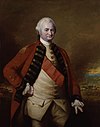 |
27 June 1758 | 23 January 1760 | Resigned | |
| John Zephaniah Holwell |  |
28 January 1760 | 27 July 1760 | Handed over to Vansittart who was appointed on
23 November 1759 to the office | |
| Henry Vansittart |  |
27 July 1760 | 26 November 1764 | Returned to England | |
| John Spencer | 3 December 1764 | 3 May 1765 | |||
| The Lord Clive | 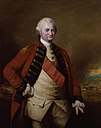 |
3 May 1765 | 20 January 1767 | Returned to England | |
| Harry Verelst | 29 January 1767 | 24 December 1769 | Retired from the service | ||
| John Cartier | 26 December 1769 | 13 April 1772 | |||
| Warren Hastings |  |
13 April 1772 | 20 October 1773
(office superseded) |
Appointed as the Governor-General of Fort William
in Bengal in 1774 | |
List of Governor-Generals
Governor-General of the Presidency of Fort William in Bengal (1773–1833)
The Regulating Act 1773 replaced the office of the Governor of the Presidency of Fort William in Bengal with Governor-General of the Presidency of Fort William in Bengal. The office of the Governor of the Presidency of Fort William in Bengal was restored in 1833.
| Portrait | Name | Term | Appointer | |
|---|---|---|---|---|
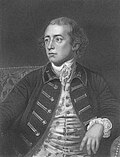 |
Warren Hastings[nb 1] | 20 October 1773 |
8 February 1785 |
East India Company (1773–1858) |
 |
John Macpherson (acting) |
8 February 1785 |
12 September 1786 | |
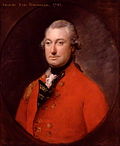 |
The Marquess Cornwallis[nb 2] | 12 September 1786 |
28 October 1793 | |
 |
John Shore | 28 October 1793 |
18 March 1798 | |
 |
Alured Clarke (acting) |
18 March 1798 |
18 May 1798 | |
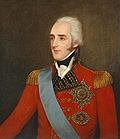 |
The Earl of Mornington[nb 3] | 18 May 1798 |
30 July 1805 | |
 |
The Marquess Cornwallis | 30 July 1805 |
5 October 1805 | |
 |
Sir George Barlow, Bt (acting) |
10 October 1805 |
31 July 1807 | |
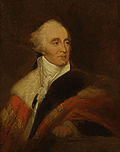 |
The Lord Minto | 31 July 1807 |
4 October 1813 | |
 |
The Marquess of Hastings[nb 4] | 4 October 1813 |
9 January 1823 | |
 |
John Adam (acting) |
9 January 1823 |
1 August 1823 | |
 |
The Lord Amherst[nb 5] | 1 August 1823 |
13 March 1828 | |
 |
William Butterworth Bayley (acting) |
13 March 1828 |
4 July 1828 | |
List of Governors
1834–1854 – Governors of the Presidency of Fort William in Bengal
By section 56 of the Government of India Act 1833 (3 & 4 Will. 4. c. lxxxv), it was enacted "that the Executive Government of each of the several Presidencies of Fort William in Bengal, Fort St. George, Bombay, and Agra shall be administered by a Governor and three Councilors, to be styled the Governor-in-Council of the said Presidencies of Fort William in Bengal, Fort St. George, Bombay, and Agra respectively, and that the Governor General of India for the time being shall be Governor of the Presidency of Fort William in Bengal." From this time the governors-general of India held also the separate office of Governor of Bengal, until the year 1854.[4] Under the Charter Act 1853 (16 & 17 Vict. c. 95) the Governor General of India was relieved of his concurrent duties as Governor of Bengal and empowered to appoint a lieutenant-governor from 1854.
| Governors of the Presidency of Fort William in Bengal
(ex-officio Governor-General of India, 1834-1854) | |||||
|---|---|---|---|---|---|
| No. | Name
(birth–death) |
Portrait | Took office | Left office | Appointer |
| 1 | The Lord William Bentick
(1774–1839) |
 |
15 November 1834
(1833) |
20 March 1835 | East India Company  |
| – | Sir Charles Metcalfe, Bt, ICS[8]
(acting) (1785–1846) |
 |
20 March 1835 | 4 March 1836 | |
| 2 | The Lord Auckland (1784–1849) | 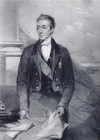 |
4 March 1836 | 28 February 1842 | |
| 3 | The Lord Ellenborough (1790–1871) |  |
28 February 1842 | June 1844 | |
| – | William Wilberforce Bird, ICS[8]
(acting) (1784–1857) |
 |
June 1844 | 23 July 1844 | |
| 4 | Sir Henry Hardinge (1785–1856) | 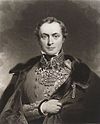 |
23 July 1844 | 12 January 1848 | |
| 5 | The Earl of Dalhousie (1812–1860) |  |
12 January 1848 | 1 May 1854
(28 February 1856) | |
1912–1935 – Governors of the Presidency of Fort William in Bengal
On 12 December 1911 at the Delhi Durbar, Emperor George V announced the transfer of the seat of the Government of India from Calcutta to Delhi and the reunification of the five predominantly Bengali-speaking divisions into a Presidency (or province) of Bengal under a Governor. On 1 April 1912 Thomas Gibson-Carmichael was appointed the Governor of Bengal.[9] Sir Frederick Burrows became the last Governor of Bengal followed by the Partition of India.
| Name | Portrait | Took office | Left office | Appointer |
|---|---|---|---|---|
| The Lord Carimichael |  |
1 April 1912 | 26 March 1917 | The Lord Hardinge of Penshurst |
| The Earl of Ronaldshay |  |
26 March 1917 | 28 March 1922 | The Lord Chelmsford |
| The Earl of Lytton |  |
28 March 1922 | 28 March 1927 | The Earl of Reading |
| Sir Francis Stanley Jackson |  |
28 March 1927 | 28 March 1932 | The Lord Irwin |
| Sir John Anderson |  |
29 March 1932 | 30 May 1937 | The Earl of Willingdon |
1935–1947 – Governors of the Province of Bengal
| Name | Portrait | Took office | Left office | Appointer |
|---|---|---|---|---|
| The Lord Brabourne |  |
30 May 1937 | 23 February 1939 | The Marquess of Linlithgow |
| Sir John Arthur Herbert | 1 July 1939 | 1 December 1943 | ||
| The Lord Casey |  |
14 January 1944 | 19 February 1946 | The Viscount Wavell |
| Sir Frederick John Burrows | 19 February 1946 | 15 August 1947 |
Lieutenant-Governors
Lieutenant-Governors of the Bengal Division of the Presidency of Fort William in Bengal (1854–1912)
Under the Government of India Act 1853 (16 & 17 Vict. c. 95) the Governor-General of India was relieved of his concurrent duties as Governor of the Presidency of Fort William in Bengal and a separate Governor was decided to be appointed. Until then a Lieutenant Governor was to be appointed. F. J. Halliday became the first Lieutenant-Governor of Bengal. William Duke served as the last lieutenant governor after which the office was superseded by the restored office of the Governor of the Presidency of Fort William in Bengal in 1912.
| No. | Name | Portrait | Took office | Left office | Appointer |
|---|---|---|---|---|---|
| 1 | Frederick James Halliday |  |
1854 | 1859 | The Marquess of Dalhousie |
| 2 | John Peter Grant |  |
1859 | 1862 | The Earl Canning |
| 3 | Cecil Beadon |  |
1862 | 1866 | |
| 4 | William Grey |  |
1867 | 1870 | Sir John Lawrence, Bt |
| 5 | George Campbell |  |
1870 | 1874 | The Earl of Mayo |
| 6 | Sir Richard Temple Hart |  |
1874 | 1877 | The Lord Northbrook |
| 7 | Sir Ashley Eden |  |
1877 | 1882 | |
| 8 | Sir Augustus Rivers Thompson |  |
1882 | 1887 | The Marquess of Ripon |
| 9 | Sir Steuart Colvin Bayley |  |
1887 | 1890 | The Earl of Dufferin |
| 10 | Sir Charles Alfred Elliott | 1890 | 1893 | The Marquess of Lansdowne | |
| 11 | Sir Anthony Patrick MacDonnell |  |
1893 | 1895 | |
| 12 | Sir Alexander Mackenzie |  |
1895 | 1897 | The Earl of Elgin |
| 13 | Sir Charles Cecil Stevens | 1897 | 1898 | ||
| 14 | Sir John Woodburn | 1898 | 1902 | ||
| 15 | James Dewar Bourdillon | 1902 | 1903 | The Lord Curzon of Kedleston | |
| 16 | Sir Andrew Henderson Leith Fraser |  |
1903 | 1906 | |
| 17 | Francis Slacke | 1906 | 1908 | The Earl of Minto | |
| 18 | Sir Edward Norman Baker |  |
1908 | 1911 | |
| 19 | Frederick William Duke | 1911 | 1912 | The Lord Hardinge of Penshurst |
Lieutenant-Governors of the North-Western Provinces of the Presidency of Fort William in Bengal (1835–1878)
The Government of India Act 1833 had intended that there be four presidencies comprising India – that of Fort William in Bengal, Bombay, Madras and Agra. The new Presidency of Agra was to be created from the Ceded and Conquered Provinces of the Bengal Presidency. However the presidency was never fully created. Instead a new act of Parliament, the India (North-West Provinces) Act 1835 (5 & 6 Will. 4. c. 52), dissolved the new presidency and established the lieutenant-governorship of North-Western Provinces within the Bengal Presidency. The lieutenant governorship was finally separated from the Bengal Presidency in 1878 and merged with the Oudh Province which had been a Chief Commissioner's Province under the direct supervision of the Indian Government till then and the office of the Lieutenant-Governor of the North-Western Provinces of the Presidency of Fort William in Bengal was abolished.
| No. | Name | Portrait | Took office | Left office | Appointer (Governor-General of India) |
|---|---|---|---|---|---|
| 1 | Sir C. T. Metcalfe |  |
1 June 1836 | 1 June 1838 | The Earl of Auckland |
| 2 | T. C. Robertson |  |
4 February 1840 | 31 December 1842 | |
| 3 | Sir G. R. Clerk |  |
30 June 1843 | 22 December 1843 | The Lord Ellenborough |
| 4 | James Thomason |  |
22 December 1843 | 10 October 1853 | |
| 5 | J. R. Colvin |  |
7 November 1853 | 9 September 1857 | The Earl of Dalhousie |
| 6 | Colonel H. Fraser |  |
30 September 1857 | 9 February 1858 | The Viscount Canning |
| 7 | Sir G. F. Edmonstone |  |
19 January 1859 | 27 February 1863 | |
| 8 | The Hon. Edmund Drummond |  |
7 March 1863 | 10 March 1868 | The Earl of Elgin |
| 9 | Sir William Muir |  |
10 March 1868 | 7 April 1874 | Sir John Lawrence |
| 10 | Sir John Strachey |  |
7 April 1874 | 26 July 1876 | The Lord Northbrook |
| 11 | Sir G. E. W. Couper |  |
26 July 1876 | 15 February 1877 | The Lord Lytton |
Post-independence
In 1947, the British rule over India came to an end, and India was partitioned into two independent dominions of the Indian Union and Pakistan. Bengal Province was partitioned into the province of West Bengal in India, and province of East Bengal (later East Pakistan) in Pakistan. East Pakistan later become independent in 1971 as Bangladesh.
See also
Notes
References
Sources
External links
Wikiwand - on
Seamless Wikipedia browsing. On steroids.

